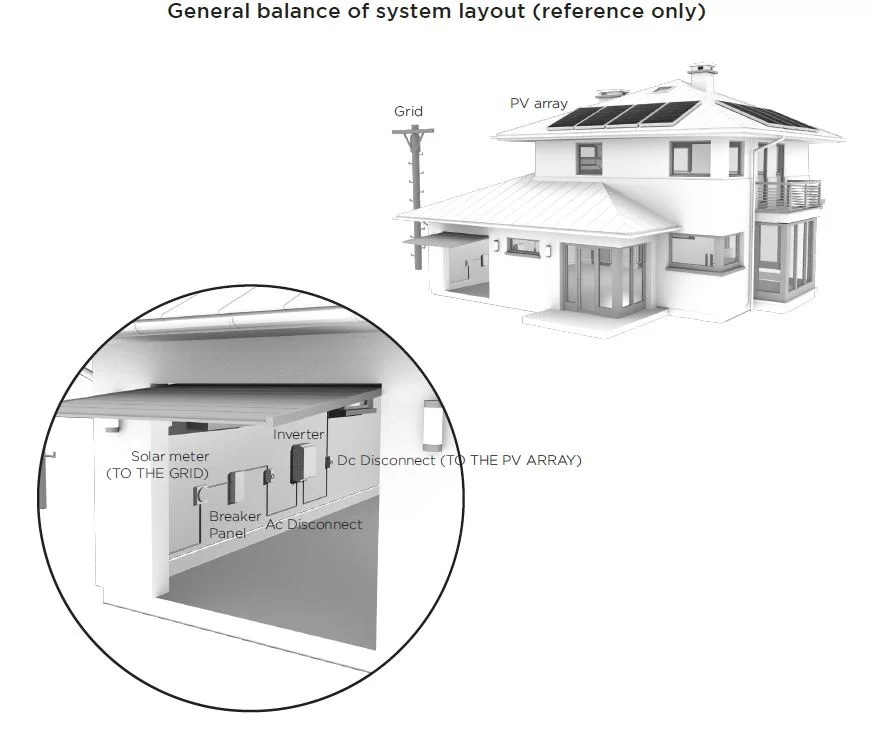HOME PV SYSTEMS – How They Work
Home PV (photovoltaic) systems can be found in different varieties, however, the most basic and economical type of home systems today are offered in Grid connected or On-grid configurations. The term On-grid basically means that the PV system for your home will need to be connected, just like any other home appliance in your main electrical fuse box, or in essence, to your electricity service provider network (grid) in order for it to work.
Other home PV systems types are available in the market today such as Hybrid PV systems, which include a battery storage system for when the power goes out, are a bit more complex in their operation. Nevertheless, this article will focus on the most basic type of PV system which is On-Grid home PV systems.

Is solar energy for me?
Solar energy is the most upcoming renewable energy technology and has
a proven and constant growth record throughout the last decade. Whether you want to reduce your electricity bill, increase the value of your property or contribute to the next generations by reducing your carbon footprint, solar energy is the right choice for you. At the end of the day, Home PV Systems can usually pay themselves off in less than 5 years which means many years of 0 or reduced electric bills. There are few low risk investments in the market today as good as solar energy.
How do Home PV Systems work?
The main goal of a home PV system is to generate electricity by converting the sun’s energy, (energy collected during daylight hour periods) from photos into electrons. As simple as it might seem, this conversion will determine the amount of energy/power a PV system can generate throughout its expected life-cycle.
The energy converted by the PV modules, as a first step, produces direct current (DC electricity) which flows through the DC circuit and is transformed, converted or inverted, (as a second step) into alternating current (AC) electricity. This conversion process is performed by a solar inverter which matches the electrical systems or home appliances power source. This is all done seamlessly and without any moving parts.
The electricity generated by an ‘on-grid’ PV system can be used either for self-consumption or can be fed back to the grid at periods when the home electricity consumption is low. Feeding electricity back to the utility grid will rely on grid connection permissions offered by your electricity provider.

How much electricity can my PV system generate?
This will depend on the following criteria:
Size of the PV system
Amount of sunshine hours throughout the year (Irradiance)
Optimal installation conditions
A very simple equation can be used however please note this is just for estimation purposes only.
Average DAY PV system production in kWh’s
(4 peak sunshine hours/day) x (size of PV System in kW) x (0.85 system derating factor = kWh/day generation
Average YEAR PV system production in kWh’s
(1460 peak sunshine hours/year) x (size of PV System in kW) x (0.85 system derating factor = kWh/year generation
What are the main components of On-grid Home PV Systems?
PowerDream ON GRID PV SYSTEMS

What is the lifetime of a PV system?
PV Modules serve as the main component of a PV system and include a power output warranty of 25 years. This means that your system can last for at least 25 years after installed. With that said however, other system components such as inverters, conductors and mounting systems will sometimes need to be replaced or maintained throughout the lifetime of the system. Inverters usually offer 5 to 20 year warranties, PV mounting systems or racks depending on the manufacturer include 10+ year or more warranty the same stands for other components.
How expensive is a PV system?
PV Module prices continue to show a decreasing cost within the market which makes them more affordable year after year. However, the price of a PV system will depend not only on the brand and technology of components selected for the system but other factors that need to be considered for their installation.
The following considerations will determine the overall cost of a PV system:
PV System size (kW)
PV system components
Labor installation costs
Installation material costs
Material transportation costs
Administrative costs
Depending on your local energy policies, some electricity service providers and or States offer PV system users incentives which will decrease the overall costs of a PV system.
Can I install my home PV System?
The PV components of a system are electronic devices manufactured under electrical safety principles that need to be compliant with grid interactive standards since these will indirectly or directly be connected to your home and the utility grid. It is recommended to seek an authorized professional installers that meets all electrical, building and safety credentials which will guarantee a successful installation.

PV Installation Cycle Diagram
The list of tools below will be required to install the PV module roof kit. It is recommended that they are acquired preceding the installation.
Hammer
Tape Measure
Cable knife
Combination pliers
Crimping tool for cable lugs (suitable for cable cross-sections of up to 2/0 AWG)
Diagonal cutting pliers
Wire stripping pliers
Chalk Line
Electric Drill
Drill Bits (e.g. masonry or wood bit), 5/16th or 0.3125mm
Extension cords
Flathead screwdriver (small and large)
Philips screwdriver (small and large)
Hexagon/Allen keys, 3 mm to 8 mm
Open-end/box wrenches or socket wrench in the sizes 1/4, 5/8th,
Spirit level
Multimeter
Ladders and or roof staging (optional)
Metal Saw (optional)
20.Safety harnesses (optional)
Safety helmet
Work Gloves
Shingle Knife (optional)


Leave a Reply
Want to join the discussion?Feel free to contribute!